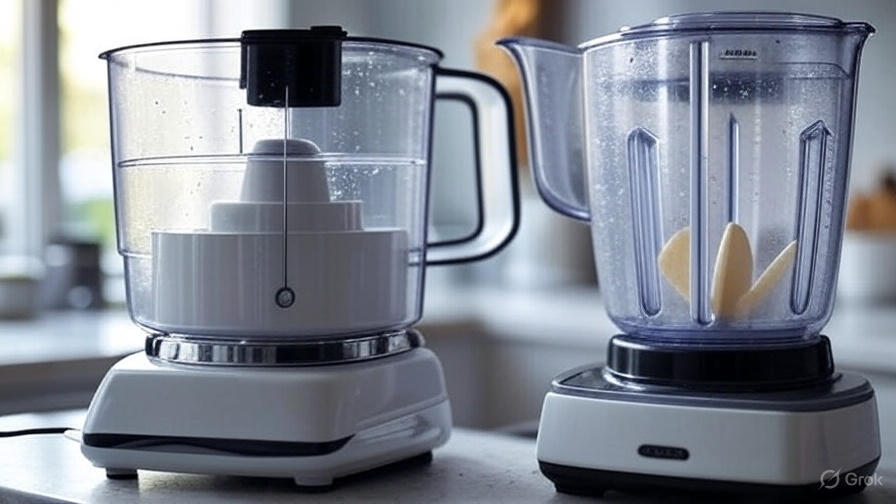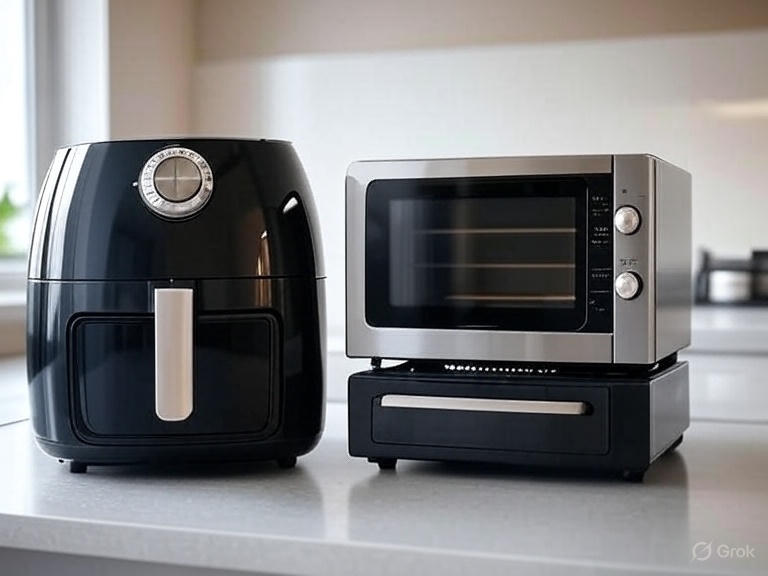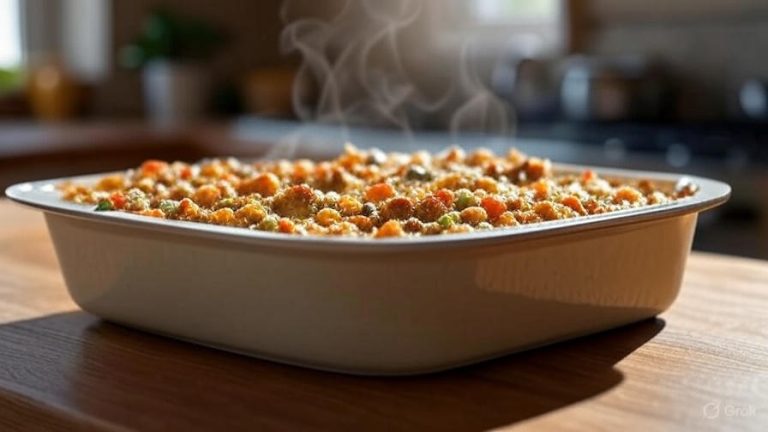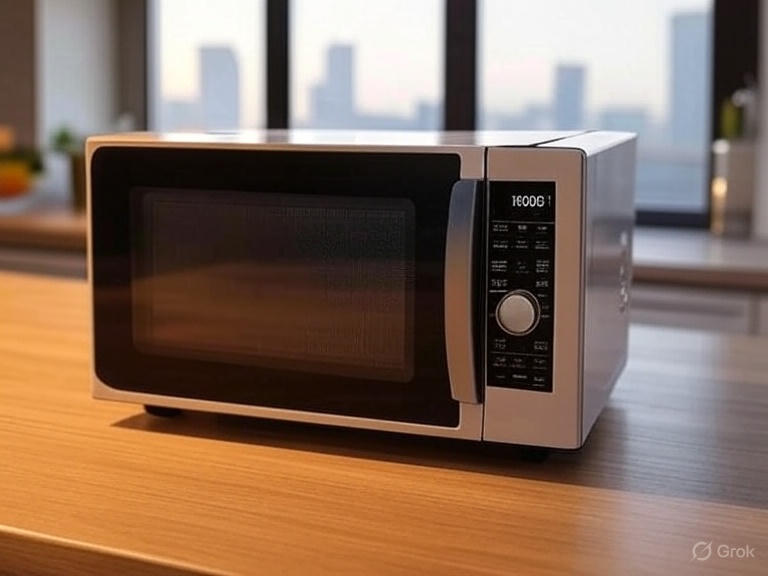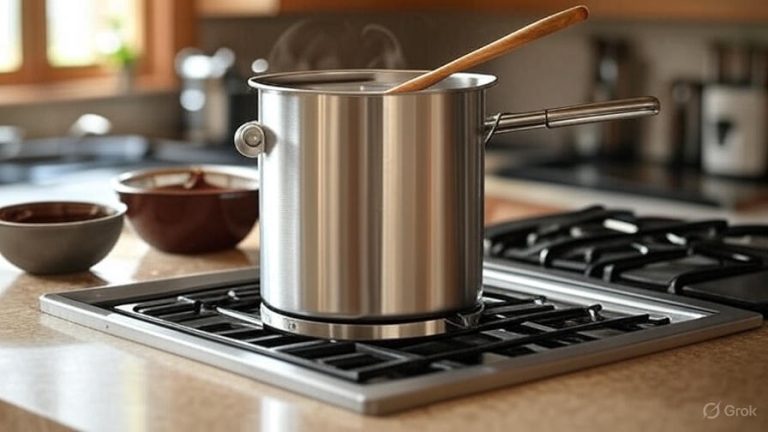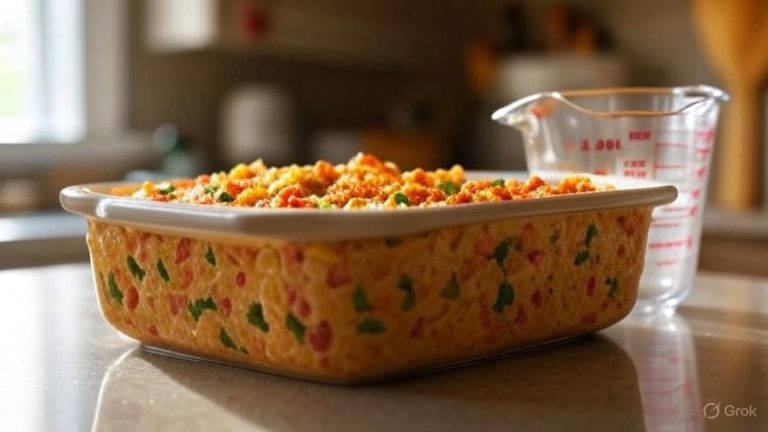Food Processor vs Blender
Every home cook faces this kitchen dilemma at some point: should you buy a food processor or a blender? Both appliances sit on countertops across America, promising to make meal prep easier and faster. Yet many people struggle to understand which tool serves their cooking needs best.
The truth is, food processors and blenders excel at different tasks. While both machines chop, mix, and blend ingredients, their unique designs make them suitable for distinct kitchen jobs. This comprehensive guide breaks down everything you need to know about these essential kitchen appliances.
What Makes Food Processors Special
Food processors revolutionized home cooking when they first appeared in kitchens during the 1970s. These powerful machines use sharp blades and wide bowls to handle solid ingredients with remarkable efficiency.
The Anatomy of a Food Processor
A typical food processor features a large, wide bowl that sits on a motorized base. The motor drives various attachments through a central shaft. Most models come with multiple blades and discs designed for specific tasks.
The S-shaped blade, often called the chopping blade, handles most basic functions. This curved metal blade spins rapidly to chop vegetables, nuts, and herbs. Slicing discs create uniform cuts for vegetables like cucumbers and potatoes. Shredding discs turn blocks of cheese into perfect shreds for tacos or pizza.
The wide bowl design allows ingredients to spread out during processing. This horizontal movement creates consistent results when chopping onions, making pie crusts, or preparing salsa ingredients.
Food Processor Strengths
Food processors dominate when it comes to solid ingredient preparation. They excel at chopping vegetables uniformly, which saves significant time during meal prep. A food processor can dice an entire onion in seconds, a task that might take several minutes with a knife.
These machines handle tough jobs that would challenge other appliances. They grind nuts into butter, turn hard cheese into fine gratings, and chop woody herbs like rosemary. The powerful motors push through resistance that would stop lesser appliances.
Pastry making becomes effortless with a food processor. The machine cuts cold butter into flour perfectly for pie crusts and biscuits. It mixes cookie dough without overworking the ingredients, resulting in tender baked goods.
Food processors also shine at making homemade hummus, pesto, and other thick sauces. The wide bowl allows ingredients to circulate properly, creating smooth, creamy textures without hot spots.
Blenders: The Liquid Masters
Blenders approach food preparation from a completely different angle. These tall, narrow appliances specialize in creating smooth liquids and breaking down ingredients into liquid form.
Blender Design Philosophy
Traditional blenders feature tall, narrow containers that create a vortex when the blades spin. This tornado effect pulls ingredients down toward the blades, creating smooth, uniform mixtures. The container shape forces liquid movement, which is essential for proper blending.
High-performance blenders have evolved far beyond their milkshake-making origins. Modern versions pack commercial-grade motors that can pulverize ice, break down tough vegetable fibers, and create silky smooth textures.
The blade assembly in blenders typically features multiple tiers. Lower blades grab larger pieces while upper blades handle fine mixing. This layered approach ensures thorough blending from bottom to top.
Blender Superpowers
Smoothies represent the most obvious blender strength. These appliances turn frozen fruits, vegetables, and liquids into creamy drinks in minutes. The powerful motors break down fibrous vegetables like kale and spinach, making green smoothies palatable and nutritious.
Hot soup preparation showcases another blender talent. High-speed blending generates friction heat that can actually cook ingredients. Some blenders can transform raw vegetables and broth into steaming hot soup through blending alone.
Nut milk creation becomes simple with a good blender. Almonds, cashews, and oats blend with water to create dairy-free alternatives. The high speeds break down ingredients completely, eliminating the need for extensive straining.
Frozen dessert preparation highlights blender versatility. Frozen bananas transform into creamy “nice cream” in minutes. Ice cream bases blend smoothly for churning later.
Head-to-Head Comparisons
Understanding how these appliances compare in real-world scenarios helps clarify which tool fits your kitchen needs.
Chopping Vegetables
Food processors dominate vegetable chopping tasks. Their wide bowls and specialized blades create uniform cuts quickly and efficiently. You can process an entire bag of carrots into perfect matchsticks in under a minute.
Blenders struggle with dry chopping tasks. The tall container design doesn’t allow vegetables to circulate properly without liquid. Attempting to chop onions in a blender often results in some pieces turning to mush while others remain too large.
However, blenders can chop vegetables when liquid is present. Making gazpacho or vegetable-based sauces works well in a blender because the liquid helps ingredients move properly.
Making Smoothies
Blenders clearly win the smoothie battle. Their design specifically targets liquid-based recipes. The vortex action pulls ingredients down consistently, creating smooth results every time.
Food processors can make smoothies, but the results often disappoint. The wide bowl design doesn’t create proper liquid movement. You’ll need to stop frequently to scrape down sides, and the final texture may remain slightly chunky.
Some food processor enthusiasts argue their appliances make thicker smoothies with more texture. While this may appeal to some, most smoothie lovers prefer the ultra-smooth results only blenders provide.
Preparing Nut Butters
Food processors excel at nut butter preparation. The wide bowl allows nuts to spread out and process evenly. The S-blade design gradually breaks down nuts from chopped pieces to smooth butter.
Making almond butter in a food processor requires patience but delivers excellent results. The process takes several minutes, but you can control texture precisely. Stop early for crunchy butter or continue processing for ultra-smooth results.
Blenders can make nut butter, but the process proves more challenging. The tall container often creates air pockets that prevent proper grinding. You’ll need to stop frequently to redistribute ingredients.
High-powered blenders like Vitamix can handle nut butter preparation more effectively than standard models. However, even these require careful attention to prevent overheating.
Creating Sauces
The sauce category reveals nuanced differences between these appliances. Thick sauces like pesto work better in food processors. The wide bowl allows basil leaves and pine nuts to chop properly before olive oil creates a paste.
Thin sauces favor blenders. Salad dressings, marinades, and liquid-based sauces blend more effectively in tall containers. The vortex action ensures all ingredients combine completely.
Mayonnaise preparation showcases interesting contrasts. Food processors make excellent mayo because you can add oil slowly while the machine runs. The wide opening allows for gradual incorporation.
Blenders can also make mayonnaise, but the narrow opening makes oil addition trickier. Some models include special lids with small holes for gradual oil addition.
Capacity and Size Considerations
Kitchen space and family size significantly impact appliance decisions. Both machines come in various sizes to accommodate different needs.
Food Processor Sizes
Mini food processors handle small jobs like chopping garlic or making single servings of dip. These compact models typically process 1-3 cups of ingredients. They work well for small kitchens or households that rarely cook large quantities.
Standard food processors range from 7-14 cups capacity. These models handle most family cooking needs efficiently. They can process ingredients for weeknight dinners or weekend meal prep sessions.
Large food processors hold 16+ cups and target serious home cooks. These machines handle party-size batches of guacamole or process vegetables for large families.
Blender Capacities
Personal blenders focus on single-serve drinks. These compact models often include travel cups that double as blending containers. They’re perfect for morning smoothies or protein shakes.
Standard blenders typically hold 40-64 ounces (5-8 cups). This size handles most family blending needs, from smoothies to soups for 4-6 people.
Commercial-style blenders often feature larger containers, sometimes exceeding 80 ounces. These models target households that frequently entertain or have large families.
Counter Space Reality
Food processors generally require more storage space than blenders. Their wide bases and multiple attachments need dedicated cabinet space. However, many models nest bowls and store attachments inside the main bowl to minimize space requirements.
Blenders typically have smaller footprints but are often taller than food processors. This height can create storage challenges in kitchens with low cabinets or shelves.
Some households keep both appliances on counters for daily use. This approach works well if you have adequate counter space and use both machines regularly.
Performance and Power Analysis
Motor power significantly affects appliance performance, but higher wattage doesn’t always mean better results for every task.
Food Processor Motors
Most food processors operate between 400-1200 watts. Basic models around 400-600 watts handle light tasks like chopping herbs or making simple dips. They work fine for occasional use but may struggle with tough ingredients.
Mid-range models (700-900 watts) handle most kitchen tasks efficiently. They can knead bread dough, grind nuts, and process large batches of vegetables without overheating.
Heavy-duty food processors (1000+ watts) power through the toughest jobs. They maintain consistent speed under load and handle commercial-level food preparation tasks.
Blender Power Ratings
Basic blenders start around 300-500 watts. These entry-level models work for soft fruits and liquid-heavy recipes but struggle with ice or frozen ingredients.
Standard blenders (600-1000 watts) handle most home blending needs. They crush ice effectively and blend frozen smoothie ingredients without difficulty.
High-performance blenders (1200-1800+ watts) deliver professional-grade power. These machines can heat soup through friction, grind grains into flour, and pulverize the toughest ingredients.
Power vs Performance Reality
Raw wattage numbers don’t tell the complete story. Blade design, container shape, and overall engineering significantly impact performance.
Some 800-watt food processors outperform 1200-watt models due to superior blade design and bowl construction. Similarly, well-engineered blenders can deliver excellent results with moderate power ratings.
Motor quality also matters more than peak power. Consistent performance under load and durability over time depend more on motor construction than maximum wattage ratings.
Maintenance and Cleaning Factors
Daily maintenance requirements often influence appliance preferences more than performance capabilities.
Food Processor Cleaning
Food processors typically require more cleaning time due to their multiple parts. The bowl, lid, blades, and various discs all need individual attention. However, most components are dishwasher-safe in quality models.
The wide bowl design makes hand washing relatively easy. You can access all surfaces without difficulty, and the shallow depth prevents water from pooling in hard-to-reach areas.
Sharp blades require careful handling during cleaning. Many accidents happen during blade washing, so some people prefer using bottle brushes or leaving blade cleaning to dishwashers.
Blender Maintenance
Blenders generally offer simpler cleaning routines. Many models can clean themselves by blending warm soapy water for 30-60 seconds. This self-cleaning feature eliminates most manual scrubbing.
The tall container design can complicate hand washing. Deep containers require long brushes to reach the bottom effectively. Some users find this more challenging than cleaning food processor bowls.
Blade assemblies in blenders are typically removable but require careful handling. The multi-tiered blade design can trap food particles, requiring thorough rinsing.
Long-term Durability
Both appliances face durability challenges with regular use. Food processor bowls can crack from impact or temperature changes. Blade sharpness diminishes over time, affecting performance.
Blender containers, especially glass ones, can break from drops or thermal shock. Plastic containers may become cloudy or stained over time, particularly when processing acidic ingredients.
Motor longevity depends heavily on usage patterns and maintenance. Overloading either appliance regularly can lead to premature motor failure.
Cost Analysis and Value
Budget considerations play crucial roles in appliance decisions, but upfront costs don’t always reflect long-term value.
Initial Investment Ranges
Basic food processors start around $30-50 for small models. These budget options handle light tasks but may lack durability for frequent use.
Mid-range food processors ($100-200) offer the best value for most households. They include multiple attachments, decent power, and reasonable durability.
Premium food processors can exceed $300-400. These models target serious cooks who need commercial-grade performance and durability.
Blenders show similar price ranges. Personal blenders start around $25-40, while high-performance models can cost $400-600 or more.
Operating Costs
Both appliances consume similar electricity during operation. Their intermittent use patterns mean energy costs rarely factor into buying decisions.
Replacement parts can affect long-term costs. Food processors with proprietary blade systems may cost more to maintain than models with standard replacement parts.
Blender containers and blade assemblies occasionally need replacement. Glass containers cost more to replace but last longer than plastic alternatives.
Value Assessment
Value depends heavily on usage patterns. A $400 Vitamix blender provides excellent value for daily smoothie makers but wastes money for occasional users.
Similarly, expensive food processors only justify their costs for frequent users who need their specialized capabilities.
Many households find that mid-range models from reputable brands provide the best value proposition. They offer good performance without premium pricing.
Specialized Uses and Niche Applications
Beyond basic food preparation, both appliances serve specialized cooking needs that might influence your decision.
Baking Applications
Food processors revolutionize baking for many home cooks. They make perfect pie crusts by cutting cold butter into flour without overworking. The result is flakier pastries than hand mixing typically produces.
Cookie dough preparation becomes effortless in food processors. They cream butter and sugar efficiently while preventing overmixing that can toughen cookies.
Bread making benefits from food processor power. These machines can knead most dough types quickly and consistently. However, very wet doughs or large batches may exceed capacity limits.
Blenders offer fewer direct baking applications. They can cream small amounts of butter and sugar for cakes, but their tall containers make scraping difficult.
Baby Food Preparation
Both appliances can prepare homemade baby food, but with different advantages. Food processors excel at creating chunky textures for older babies transitioning to solid foods. You can control consistency precisely by adjusting processing time.
Blenders create ultra-smooth purees perfect for very young babies just starting solids. The powerful blending action breaks down tough vegetable fibers completely.
Steam-blending systems combine cooking and pureeing in one appliance specifically for baby food. These specialized devices often work better than adapting general-purpose appliances.
Raw Food Preparation
Raw food enthusiasts often prefer food processors for their versatility. These machines can create raw “rice” from cauliflower, make vegetable noodles with slicing discs, and prepare complex raw dishes.
Spiral attachments for food processors create attractive vegetable noodles for raw pasta dishes. The various cutting options support diverse raw food textures.
Blenders serve raw food preparation through smoothie making and sauce creation. High-powered models can break down tough raw vegetables into digestible forms.
Frozen Treat Creation
Blenders dominate frozen dessert preparation. They turn frozen bananas into creamy ice cream alternatives without any added dairy. Frozen fruit combines with minimal liquid to create sorbet-like treats.
Some blenders can actually freeze ingredients through extended blending. The friction and air incorporation can lower mixture temperatures while creating frozen textures.
Food processors can make frozen treats but require more liquid to process frozen ingredients effectively. They work better for chopping frozen fruits into chunks rather than creating smooth frozen desserts.
Making Your Final Decision
Your cooking style, kitchen space, and budget all factor into the food processor vs blender decision. Neither appliance is universally superior – they excel in different areas.
When Food Processors Win
Choose food processors if you frequently chop vegetables for meal prep. These machines save enormous time when preparing stir-fries, salads, or soup ingredients.
Baking enthusiasts benefit greatly from food processor capabilities. Pie crusts, cookie dough, and bread preparation all become much easier with these versatile machines.
Large families or frequent entertainers appreciate food processor capacity. These machines can prepare party-size quantities of guacamole, salsa, or chopped vegetables efficiently.
When Blenders Triumph
Daily smoothie drinkers need high-quality blenders. No other appliance creates consistently smooth results with frozen fruits and vegetables.
Soup lovers benefit from blender capabilities. Many models can create hot soups from raw ingredients through friction heating, eliminating stovetop cooking.
Small kitchens might favor blenders due to their typically smaller footprints and simpler cleaning routines.
The Both Option
Many serious home cooks eventually acquire both appliances. They serve complementary rather than competing roles in well-equipped kitchens.
If budget allows, starting with one appliance and adding the other later provides maximum versatility. This approach lets you determine which machine you use most frequently.
Some combination units attempt to serve both functions. While these save space, they often compromise performance compared to dedicated appliances.
Conclusion
The food processor vs blender debate doesn’t have a single correct answer. Your individual cooking needs, kitchen space, and budget constraints should guide your decision.
Food processors excel at solid ingredient preparation, baking applications, and high-volume food prep. They’re ideal for cooks who frequently chop vegetables, make pastries, or prepare large quantities of food.
Blenders dominate liquid-based recipes, smoothie preparation, and soup making. They serve households that prioritize drinks, frozen treats, and smooth textures.
Consider your most frequent kitchen tasks when making this decision. Do you spend more time chopping vegetables or blending smoothies? Your honest assessment of cooking patterns should drive your choice.
Both appliances can enhance your cooking efficiency when properly matched to your needs. The key lies in understanding what each machine does best and aligning those strengths with your kitchen requirements.
Remember that quality matters more than features in both categories. A well-built mid-range appliance often outperforms a feature-laden budget model. Invest in reputable brands known for durability and performance.
Your kitchen deserves tools that make cooking more enjoyable rather than frustrating. Whether you choose a food processor, blender, or eventually both, select models that will reliably serve your culinary adventures for years to come.

